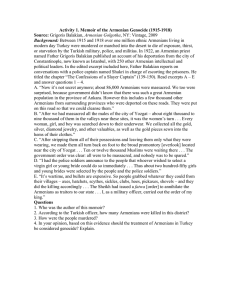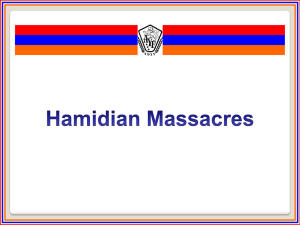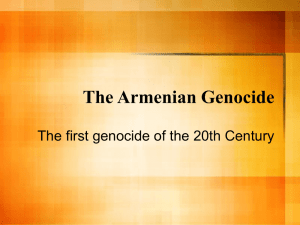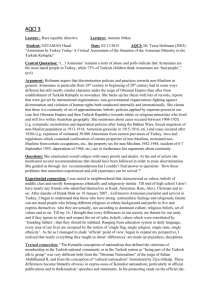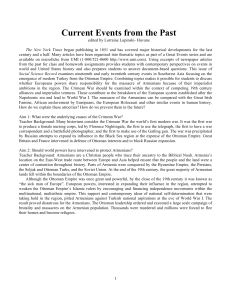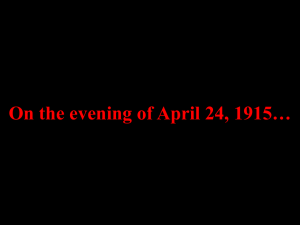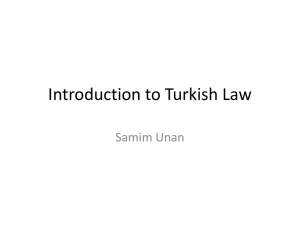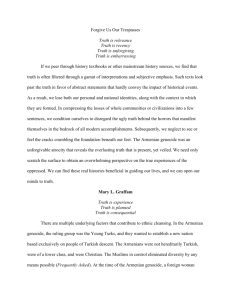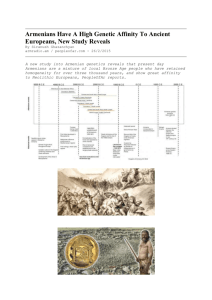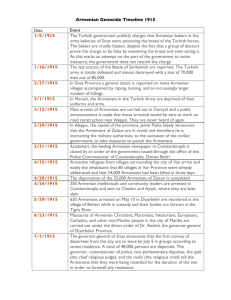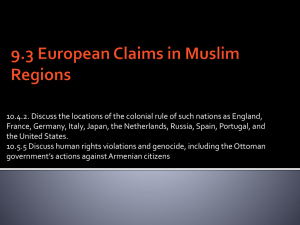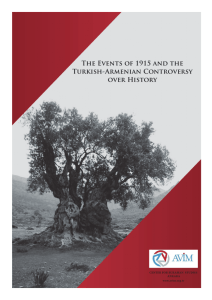Zartonk
advertisement
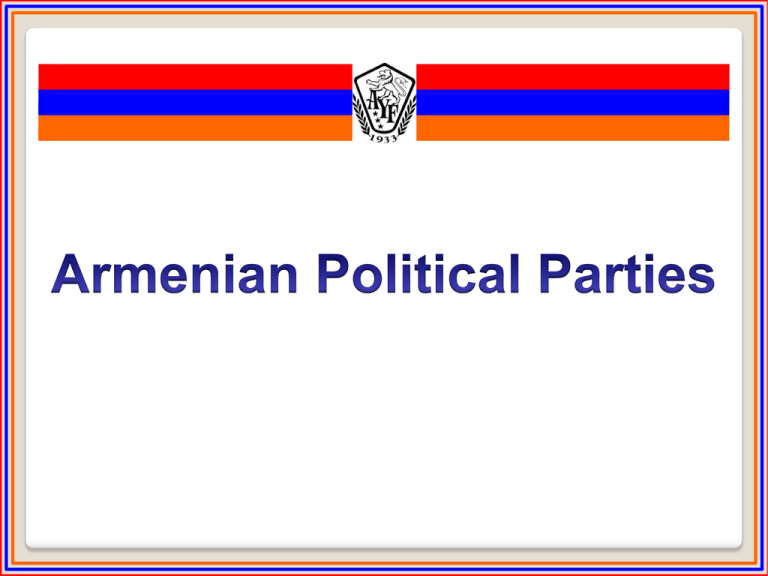
• What was the Zartonk and why is it important? • The Zartonk was the cultural and political reawakening of the Armenians that happened during the 1800’s • The Zartonk shaped who we are as Armenians • The Zartonk was what helped the Armenian people start on their journey to freedom • What impact did money have on the Zartonk? • Although most Armenians were very poor, by the late 1700’s and early 1800’s, there were several places where some Armenians began to get wealthy • Constantinople, Smyrna, Nor Nakhichevan, Tiflis, Nor Jugha, Madras, Calcutta • What did the rich people do with their money? • In the late 1700’s and early 1800’s, the Armenian’s schools were controlled by the church, focused on religious education, taught in classical Armenian • There were not many “good schools” for Armenians in the Ottoman Empire, Eastern Armenia or Persia • Rich Armenians sent their kids to Venice to the Mkhitarian Vank, or to schools in France or Russia • But the laws began to change in the Ottoman Empire and the Russian Empire so that Armenians could start schools independent of the Church • Some rich Armenians took advantage of this and donated money to start new schools, for their own children and also to help the cause of education among all Armenians • Russian Empire: Lazarian Institute in Moscow, the Nercessian School in Tiflis, and Kevorkian Academy in Etchmiadzin • Ottoman Empire: Sanassarian School in Garin; and NubarShahnazarian, Getronagan and Berberian Schools in Bolis, Varag and Armash seminaries • Alumni formed groups to start schools in Van, Moush, Baghesh, Kharpert, Dikranagert, and Garin • Other schools founded by American missionaries in Bolis, Marsovan, Kharpert, Aintab, Marash and Tarsus • Some of these schools made a big impact on our nation because they trained the leaders of the future Lazarian Institute, MoscowNersessian School, Tiflis Getronagan School, Bolis Sanassarian School, Garin • There were no universities in Armenia or the Ottoman Empire • Armenians who wanted to go to college went to Europe or Russia • They studied history, science, literature, philosophy, languages, etc • They also learned about democracy, freedom and justice and made contacts with other European students who became important leaders in their countries • Apovian’s books and the Mkhitarian Monk’s grammar books in modern Armenian paved the way for growth in Armenian literature • The 1800’s also saw lots of Armenian newspapers and magazines being published • Gave opportunities for Armenian writers, poets to write about romance, politics, current events • Apovian, Raffi, Kamar Katiba, Ghevont Alishan, Mkrditch Beshiktashlian, Mikhail Nalbandian, Hovanes Toumanian, Leo, Krikor Ardsruni, Yervant Odian, Hagop Baronian, Krikor Zohrab, Taniel Varoujan • The influence of European political thought and world events helped shape new generations of leaders for the Armenian Nation • Patriarch Nerses Varjabedian, Khrimian Hairig, Mikhael Nalbandian, Mkrditch Beshiktashlian, Krikor Ardsruni and other began to shape Armenian public opinion and influence others • In 1860, the Ottoman government allowed Armenians to have their own constitution and legislature, centered around the Church to run the affairs of the community • This new legislature helped create a new leadership • Many parts of this constitution still govern the way our church is run today • The most important aspect is democracy • In 1862, the Armenians of Zeitun revolted, protesting against the confiscation of lands and the settlement of Tatars from Crimea into the area • Secret organizations formed like the Black Cross Society, Union of Salvation, and Protectors of the Fatherland • Armenians started on a more active path to liberation • From about 1880 onwards, bands of Fedayees began to organize to defend the Armenian villagers • Led by people like Arapo, Aghpiur Serop, Hriar and others
